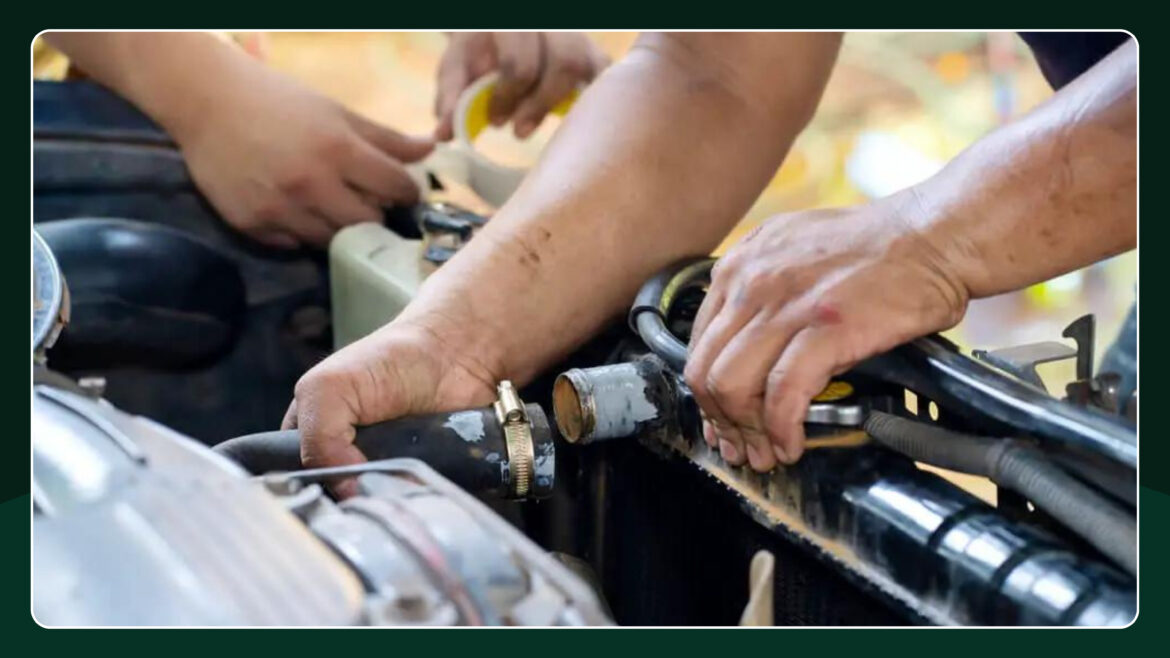
What is the best coolant temperature for my car in summer?
Coolant Temperature
In the blistering heat of summer, maintaining your vehicle’s coolant temperature at an optimum is crucial to engine performance and longevity. With the summer sun beating down, your car’s engine is running at full speed. It’s no surprise that summer is the peak season for engine overheating and roadside breakdowns.
As engine temperatures rise, components expand, hoses soften, and fluids boil. If left unchecked, serious engine damage can occur. Get ready to prevent the risk of overheating this summer. Understanding how engine coolant temperature works, finding the optimal operating temperature, regularly checking coolant levels, and monitoring heat levels can keep you and your car cool as the mercury rises.
What exactly is engine coolant and why is it so important?
Before we dive into the details of optimal coolant temperature, it’s helpful to understand what engine coolant does and why it’s so important to the core function of your engine.
Coolant 101 – What is it? Engine coolant is a specially formulated liquid engine fluid designed to transfer heat. It consists of a base mix of distilled water, ethylene glycol, and various other additives and inhibitor packages.
Inside your engine, the coolant absorbs excess heat from combustion and friction, then releases it through the radiator. It then returns to cool and repeats the process. This constant movement of the coolant regulates the heat in your engine, keeping the temperature constant. ESSENTIAL DUTIES & RESPONSIBILITIES
From heat transfer to antifreeze and corrosion resistance, the primary roles of engine coolant are:
Engine temperature regulation: The coolant absorbs excess heat from engine components and dissipates it through the radiator to prevent damage from overheating. This heat transfer regulates operating temperatures.
Prevents components from freezing: The water/coolant mixture has antifreeze properties that significantly lower the freezing point, protecting engine components from frost cracking and damage in cold weather.
Corrosion reduction: The coolant contains a special additive package that leaves a protective anti-corrosion layer on the surfaces of engine passages. This prevents the formation of limescale, rust and deposits that can cause clogs. For smooth operation: Properly formulated coolant lubricates the water pump seals, valves and other moving parts that flow through your engine. This reduction in friction keeps everything running smoothly.
Without coolant to perform these important functions, your daily engine operation will grind to a halt and potentially fatal overheating damage could occur.
Find the sweet spot – optimal coolant operating temperature
If your engine coolant is working so hard to regulate its temperature, what temperature gauge reading is considered “just right”? Finding the optimal heat range your engine should remain in is important for both performance and longevity.
Start by consulting your owner’s manual. Check your owner’s manual or owner’s manual to find the standard operating temperature range for your vehicle’s make and model. This varies by engine configuration and vehicle, but is typically between 90 and 105°C when warmed up.
Getting closer to ideal Within this window, you’ll find an even narrower range that is considered ideal. Improved fuel efficiency: Engines achieve their best combustion efficiency at 94°C. This means you get the most power and range from every drop of fuel.
Reduced emissions: At this temperature, catalytic converters, oxygen sensors, exhaust gas recirculation, and other emissions systems activate to reduce environmental impact. Limit component stress: Heat causes metals to expand, pushing seals and hoses to their bending limits. Reaching this optimum point reduces stress.
How new engines run hotter
Previously, 90-95°C (195-203°F) was considered the average operating temperature. However, new vehicles are designed to run hotter, with some high-performance models exceeding 105°C (220°F). Manufacturers have reformulated coolants and built engines with higher heat resistance to achieve efficiency and emissions benefits.
So don’t worry if your new car runs consistently hotter than your older car. These comfortable coolant temperatures are within technical specifications, and protective handrails prevent damage from excessive heat.
Using Temperature Monitoring Tools
Knowing your optimal coolant temperature helps optimize performance, but it’s of little use if you don’t know your actual engine temperature. Let’s review your temperature monitoring options so you can adjust them to hit the sweet spot.
Get to Know Your Thermometer
The easiest way to monitor your coolant temperature is directly on your vehicle’s instrument cluster. The thermometer will tell you where your engine heat is on a spectrum from cold to hot.
Cold/Cold
When your engine is warming up, the reading will be half way down or lower. Avoid heavy loads until it has reached full operating temperature. Normal – An indicator halfway between the “cold” and “hot” marks indicates that you’ve reached the ideal temperature for performance and efficiency.
Hot
If the reading approaches the upper limit, it means the temperature is too high to operate safely.
Most gauges also come with additional temperature and overheat warning indicators in case the fluid exceeds safe limits. Take note if these are enabled.
Digital Temperature Display
If your vehicle has an on-board diagnostic port (OBD-II), you can use a code reader to get an accurate, real-time reading of your engine coolant temperature. This means you can work with concrete numbers, eliminating the need for guesswork when interpreting the reading.
Various internet-connected infotainment systems, such as GM OnStar, can also provide instant temperature checks and overheat warnings. Regardless of your engine’s heat tendencies, monitoring temperatures can prevent risk. If you can detect excess heat early, you can take corrective action before your radiator boils over.
Maintaining Proper Coolant Condition and Levels
Even ideal heat levels can quickly lead to overheating due to uncontrolled fluid loss or poor coolant conditions. Learn best practices for keeping coolant levels optimal all year round.
How Fluid Levels Decrease
As engine coolant ages, it deteriorates in quality and becomes contaminated, inevitably seeping past old seals through external and internal leaks. Too much loss blocks the flow, reducing heat dissipation capacity and causing operating temperatures to spike. Therefore, regular level checks prevent fluid loss or dilution errors before they become a problem.
Adding coolant
Contrary to what your grandpa might tell you, you should avoid periodically removing the radiator cap to check the fluid level or topping it off when the engine is warm. This can release pressurized steam and hot fluid that can cause severe burns.
Instead, find the plastic coolant container under the hood, which has the MIN and MAX level lines. After the engine has thoroughly cooled overnight, clean the cap and add pre-mixed concentrated coolant only up to the MAX line. This allows you to replenish lost volumes in your system without exposing it to a dangerous pressurized flow of boiling hot fluid.
Completely Drain and Replace
Refilling with premix coolant will maintain the concentration, but you should completely flush and replace the old contaminated coolant at least every 3-5 years or 30,000 miles. Over time, chemical inhibitors break down, pH levels drop, and deposits form. This impedes flow and heat dissipation capabilities, causing operating temperatures to rise.
Using new, factory-spec coolant every summer ensures peak performance all season long and avoids dilution and contamination issues that can occur when your cooling system is neglected. Pro Tip: When adding new coolant, remove any air pockets by squeezing the hoses at operating temperature or by taking a short test drive to allow the system to fully cycle and open the thermostat. Trapped air pockets impede circulation and cause hot spots.
Beat the Heat This Summer
Determine the optimal coolant operating range for your vehicle and follow these habits to keep your engine cool as temperatures rise. Monitor your temperature gauge in real time and maintain proper fluid levels all year round. A little preventative maintenance and proactive temperature monitoring will keep your engine cool while the roads sizzle. Why not switch to a reliable used car? Leave it to Carfect to make a worry-free car purchase with thorough inspection and maintenance, including engine coolant checks.

